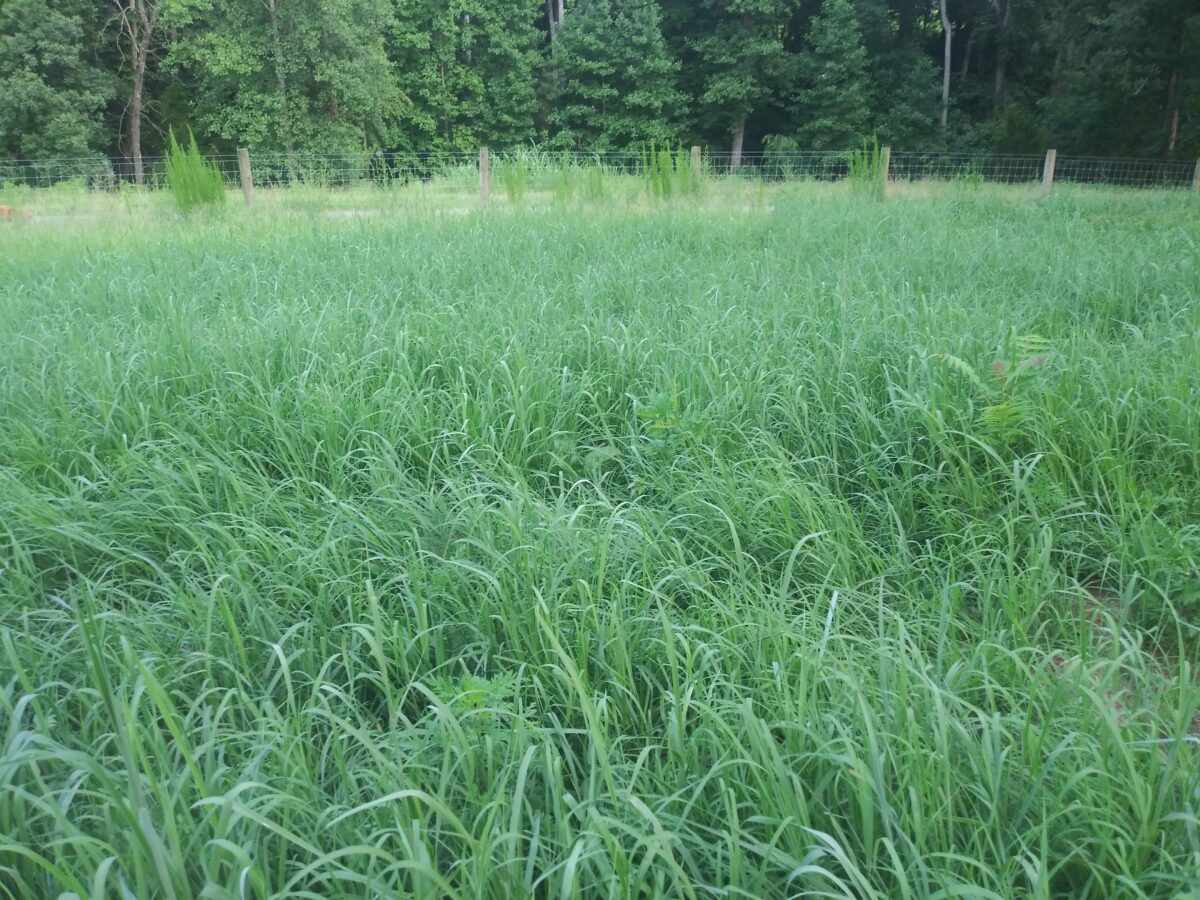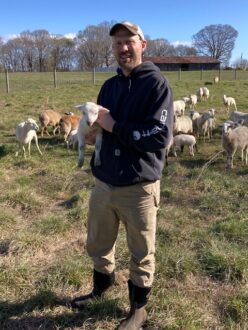HIDDENITE, North Carolina – A North Carolina livestock producer is exploring the use of native warm season grasses as forage for Katahdin Hair sheep as a way quickly bring the animals to market weight, and for better parasite control.
Lee Holcomb of LeeDer Farm, situated in a rural area just north of Charlotte, is establishing big blue stem, little blue stem and Indian grass in some of his pastures, and comparing their performance to the more common cool-season forage: fescue. He is hoping that weaned lambs will put on more weight and will have less exposure to barber pole worms (Haemonchus contortus). Holcomb is exploring his theory through funding provided by a Southern Sustainable Agriculture Research and Education (SSARE) Producer Grant.
“Fescue is mainly grown here as a forage for ruminants. But at the time that weaned lambs are ready to be turned out to pasture in May, fescue is entering its summer slump phase, where it’s putting out more seed head and less vegetation. So it may not be the greatest grass to forage on, because the animals can’t put those gains on,” said Holcomb. “Plus fescue contains an endophyte which affects all ruminants. It causes delayed hair shedding and heat stress, and reduced weight gain.”
Holcomb said he got the idea to try native warm season grasses from cattle producers in the area who grow it as forage for their herds, and are “knocking it out of the park” for weight gain, averaging anywhere from a pound to 3 pounds a day. Native warm season grasses require little fertilization inputs, are drought tolerant and are prolific growers once established.
“With fescue, my sheep are gaining about a 1/3 of a pound a day. It’d be awesome to see double that on the warm season grass,” said Holcomb. “It might be a pie in the sky kind of thing, but warm season grass puts on all of its tonnage May-July, so I think it’s doable.”
With the potential increased gains, said Holcomb, he can better tap into the ethnic markets in the area that are asking for his product.

Additionally, Holcomb hopes that the warm season grass will aid in controlling intestinal parasites.
“It all has to do with the height of the grass,” said Holcomb. “With fescue sheep tend to graze closer to the ground where the parasites are located. With warm season grasses, the best vegetation is at about 6 inches, so the lambs would be grazing at head height and avoiding those parasites which are at the bottom 4 inches of the vegetation.”
Holcomb said if he does find the lambs grazing the warm season grasses at a higher height resulting in better barber pole worm control, it’ll just be another tool in his toolbox for managing ruminant intestinal parasites. He currently purchases breeding stock specifically selected for parasite resistance.
“Growing native warm season grasses may not be for everyone. Everyone wants to plant the newest variety and get immediate results. Warm season grasses can’t be grazed until a year after establishment, and it may be a big investment to establish the grass because the seed type requires a special seed drill,” said Holcomb. “But I’m interested to see if I can get better gains and improve my animals’ overall performance. If this works out, the idea is that the market profits will make up for the initial investment.”
Holcomb is in the first year of a two-year grant project. He has been raising sheep for seven years on 60-year-old property that previously was in cattle production and served as a horse farm.
--30--
Published by the Southern Region of the Sustainable Agriculture Research and Education (SARE) program. Funded by the USDA National Institute of Food and Agriculture (NIFA), Southern SARE operates under cooperative agreements with the University of Georgia, Fort Valley State University, and the Kerr Center for Sustainable Agriculture to offer competitive grants to advance sustainable agriculture in America's Southern region. This material is based upon work that is supported by the National Institute of Food and Agriculture, U.S. Department of Agriculture, through Southern Sustainable Agriculture Research and Education. USDA is an equal opportunity employer and service provider. Any opinions, findings, conclusions, or recommendations expressed in this publication are those of the author(s) and do not necessarily reflect the view of the U.S. Department of Agriculture.
